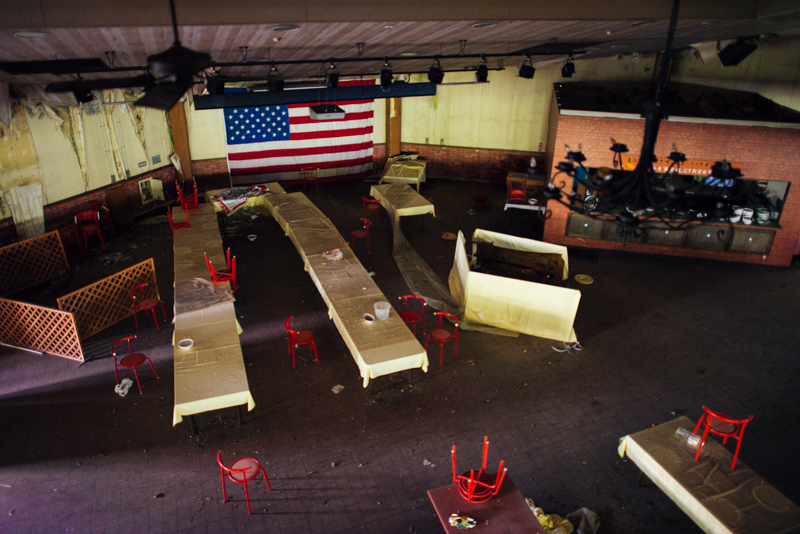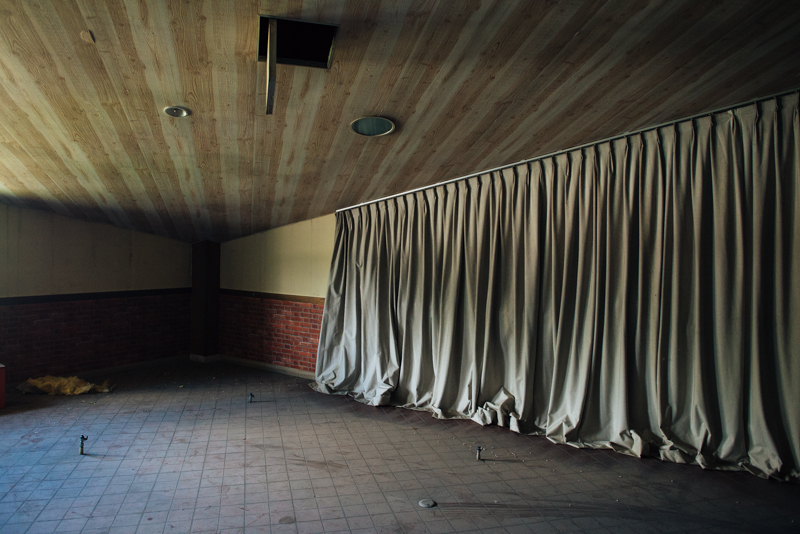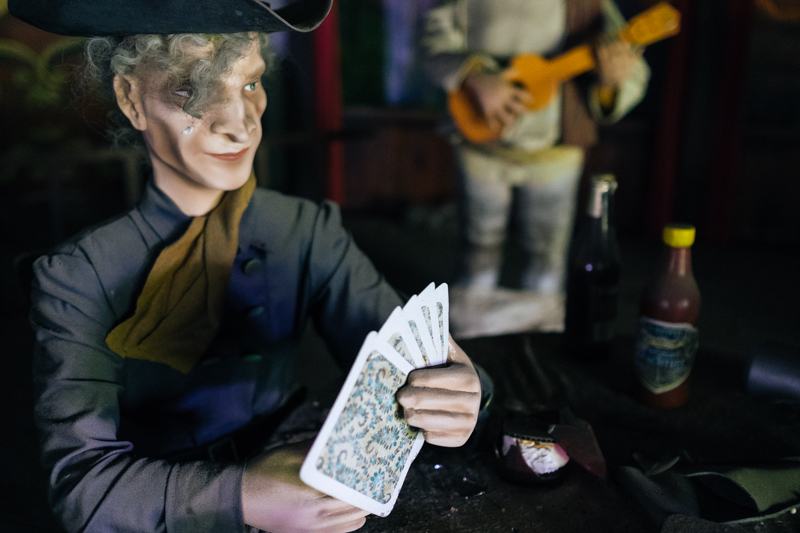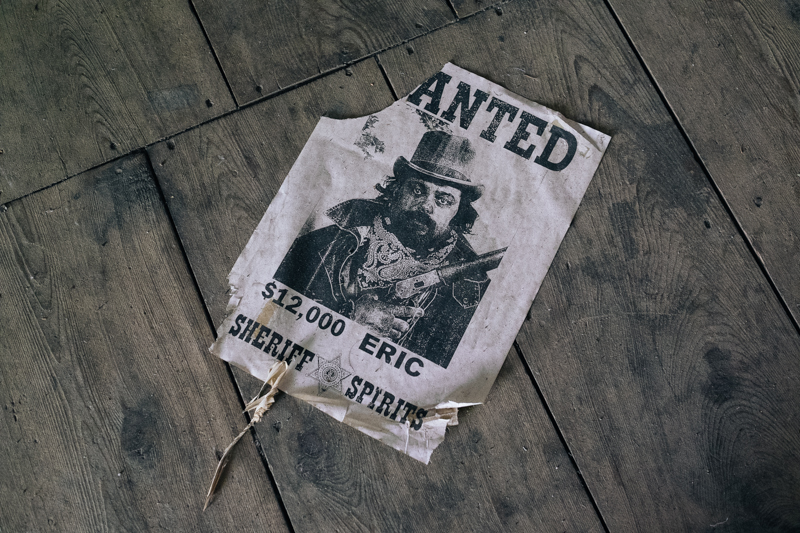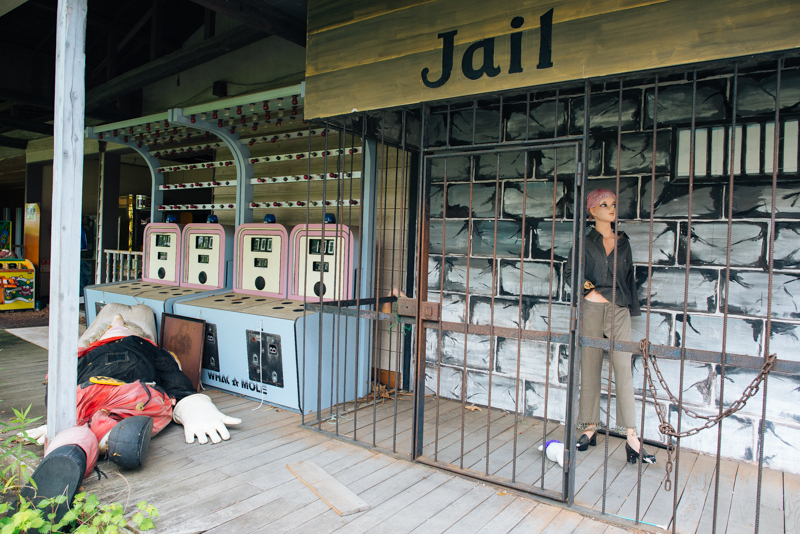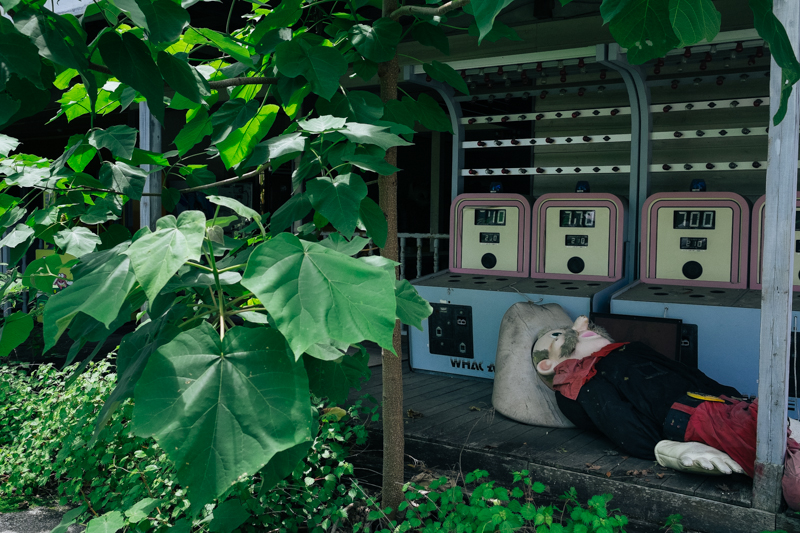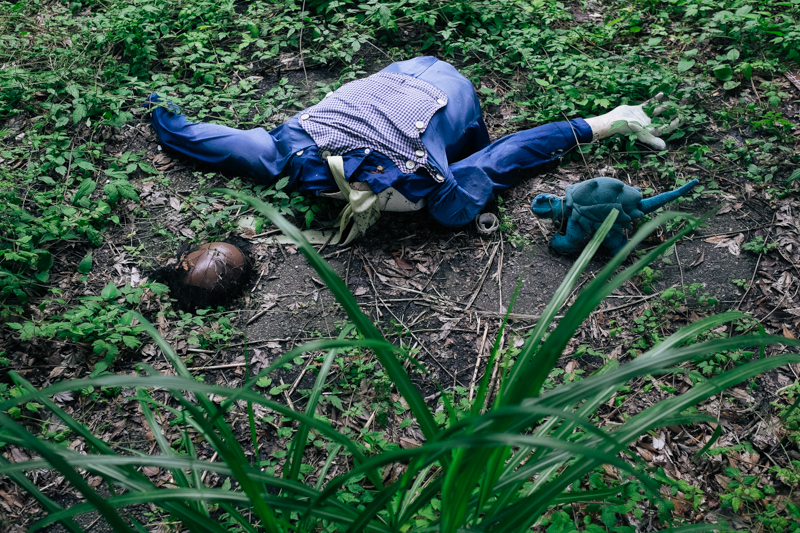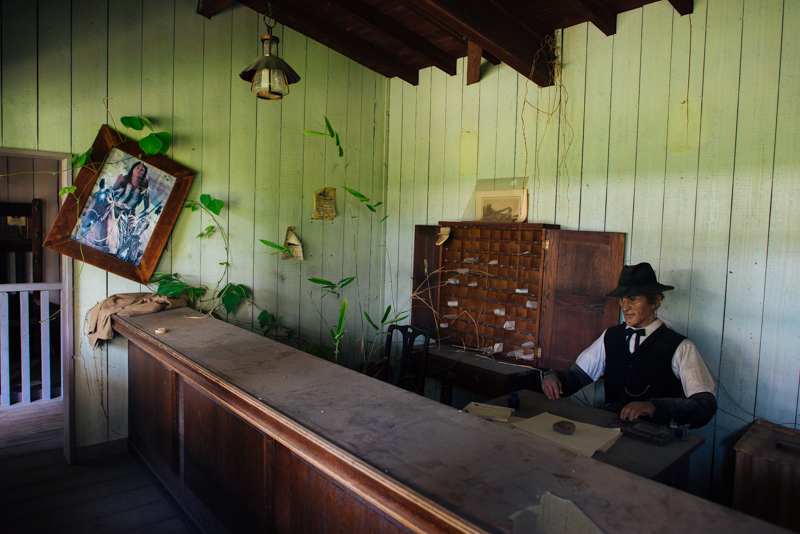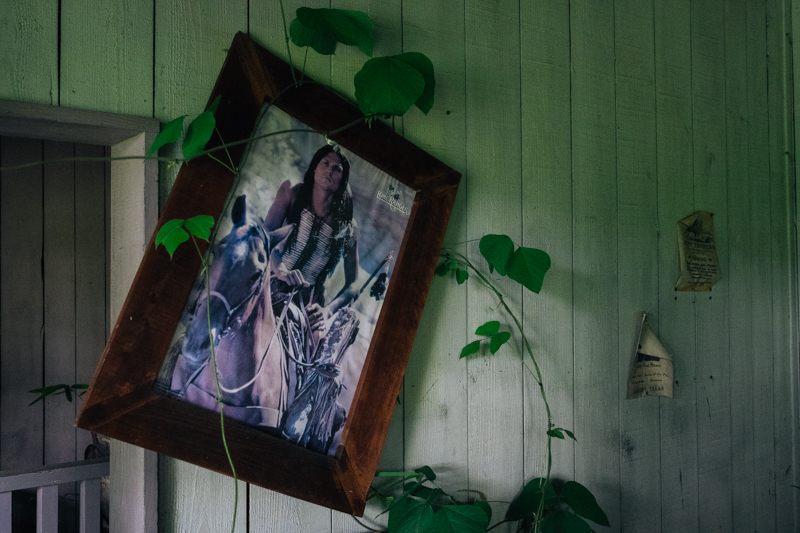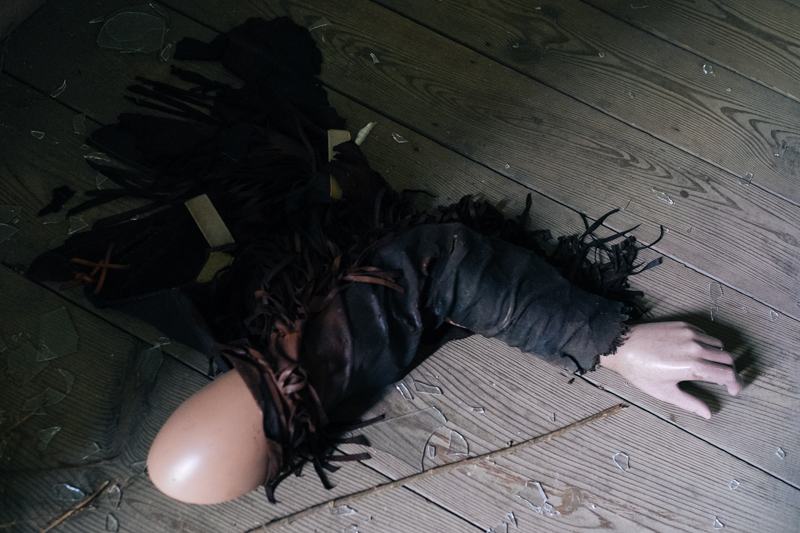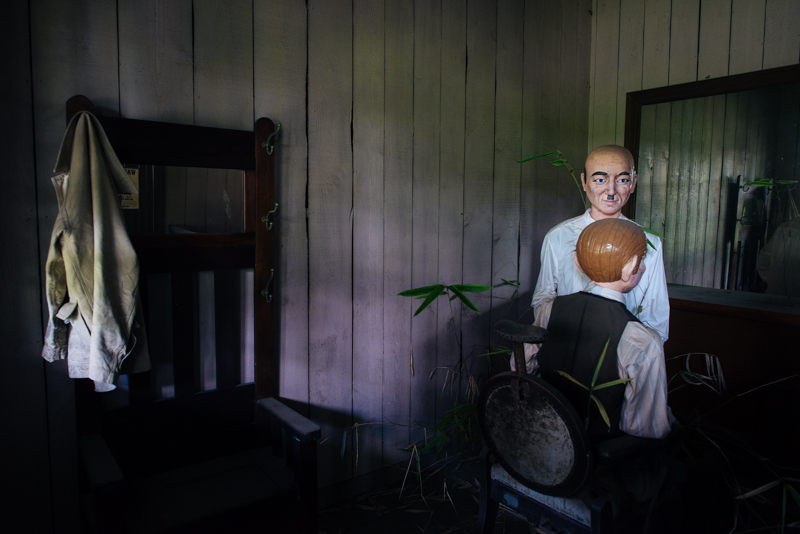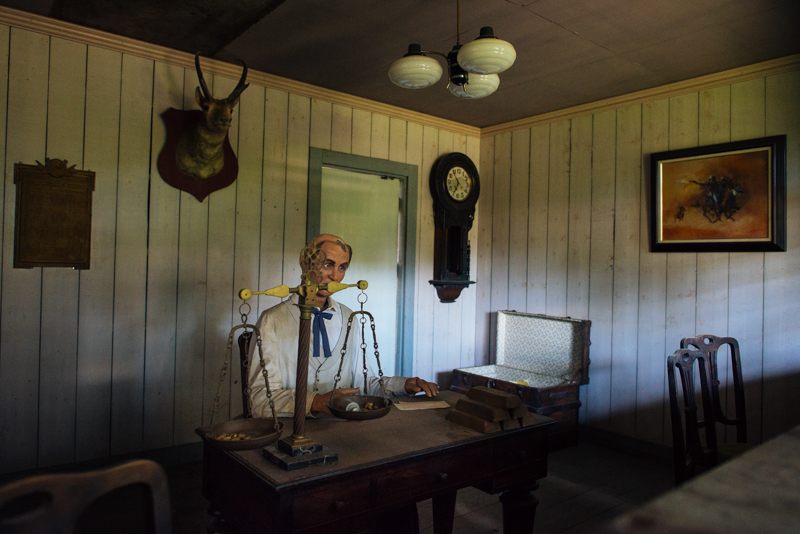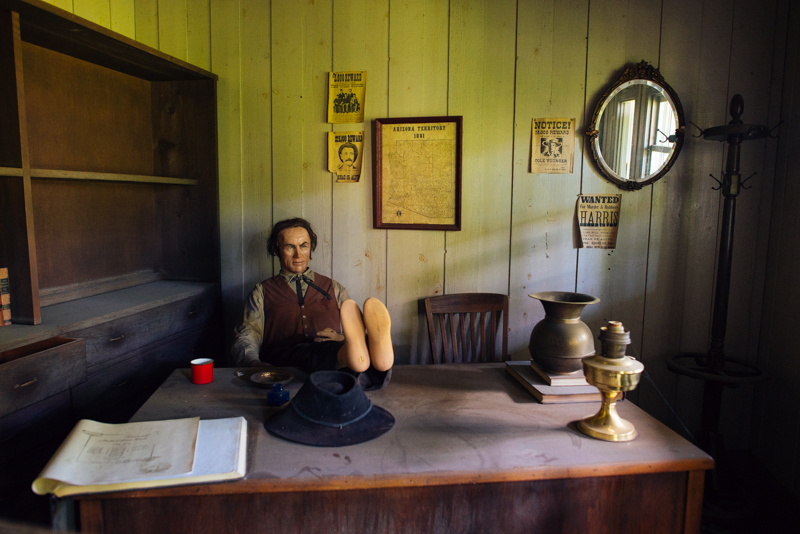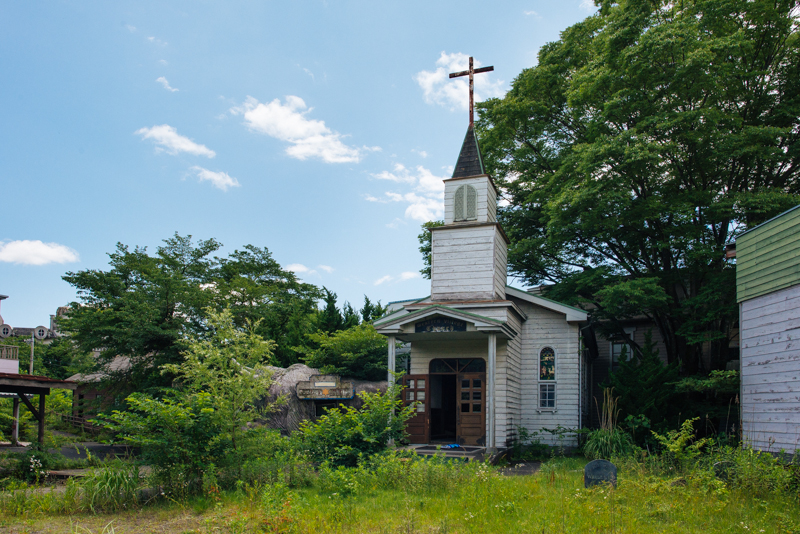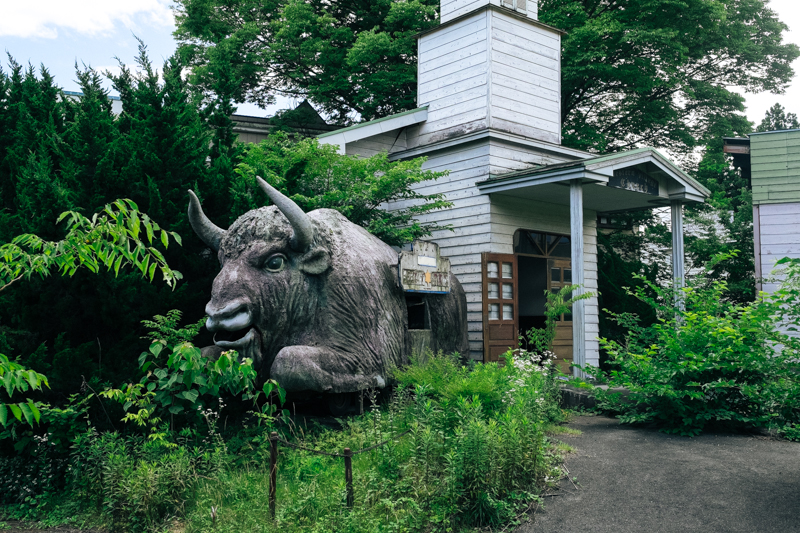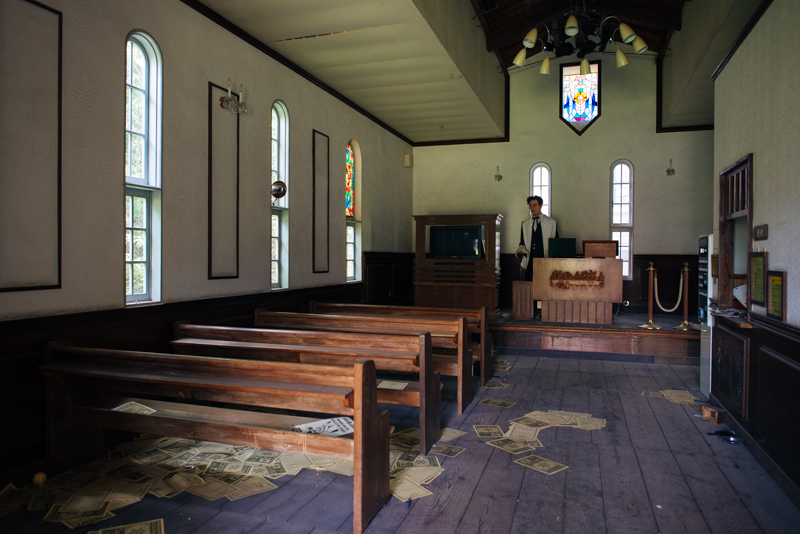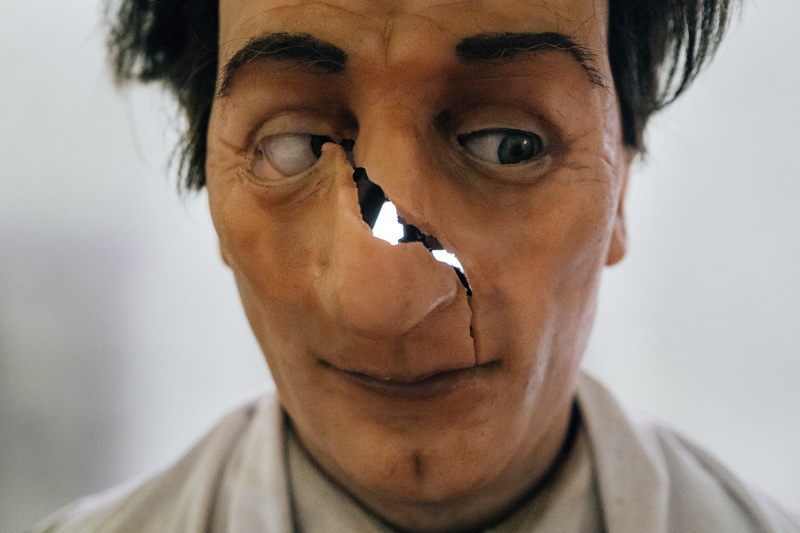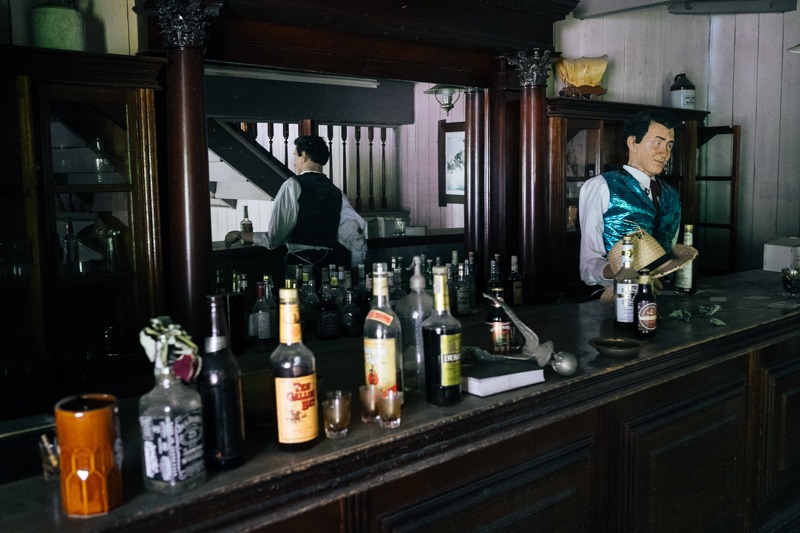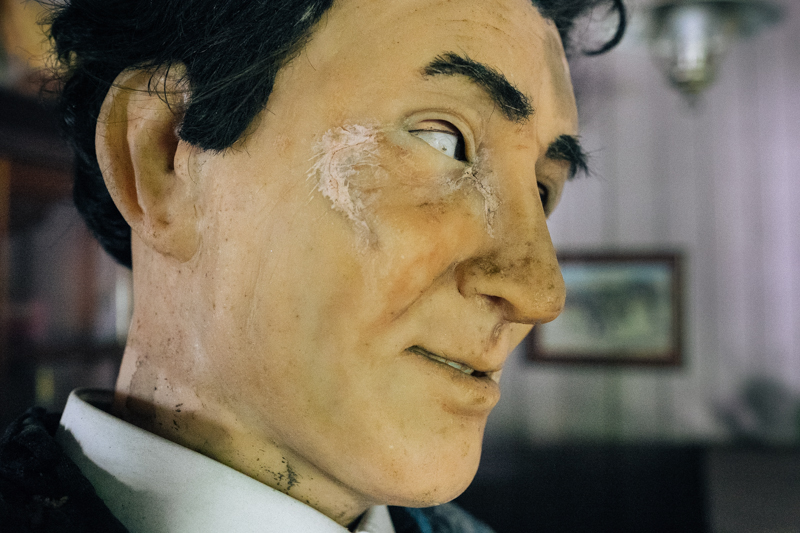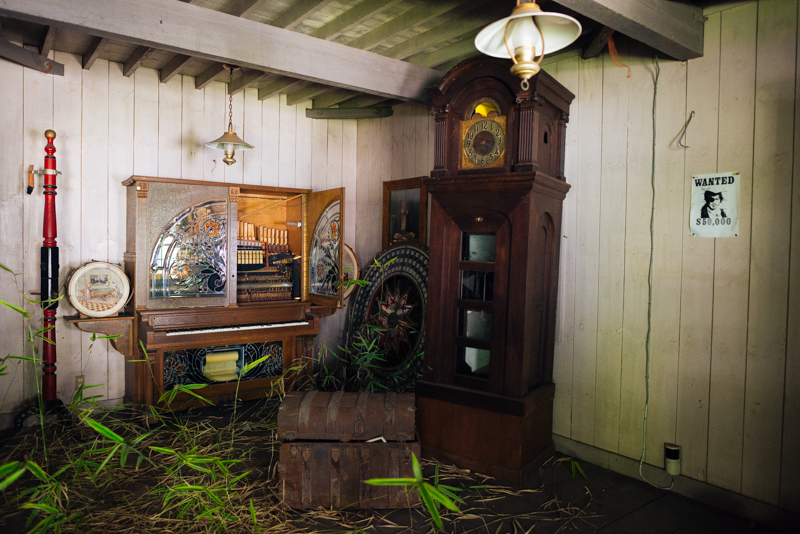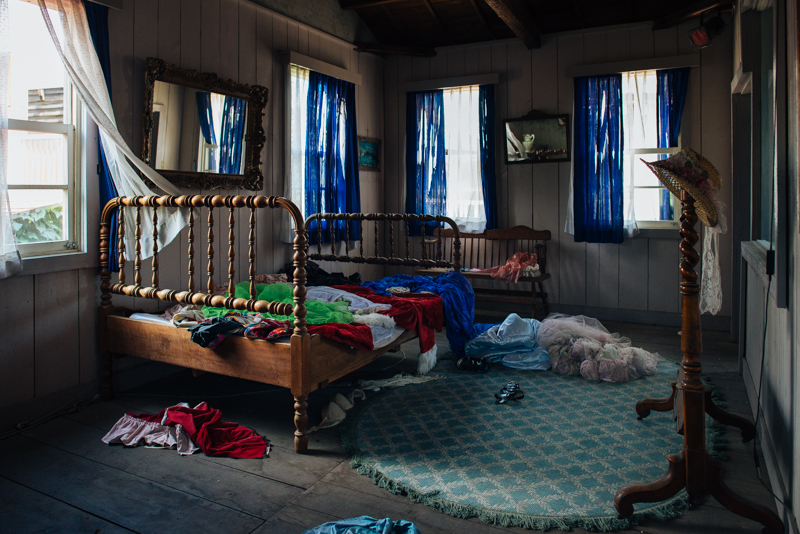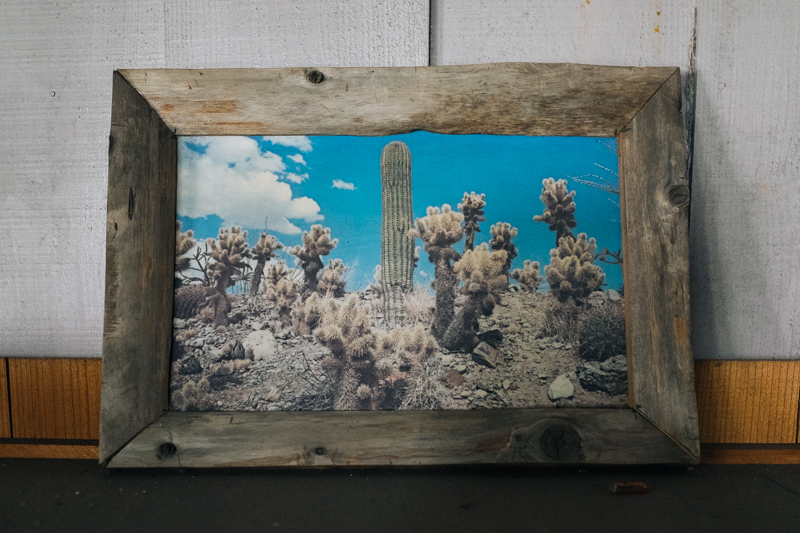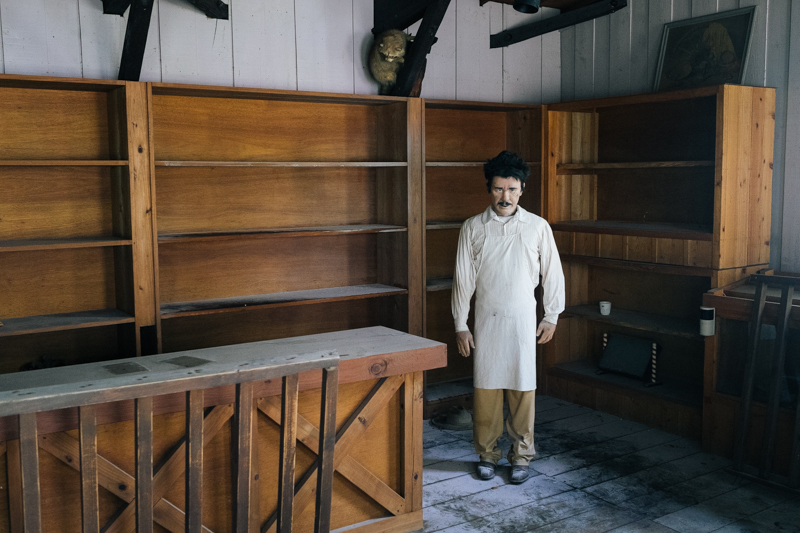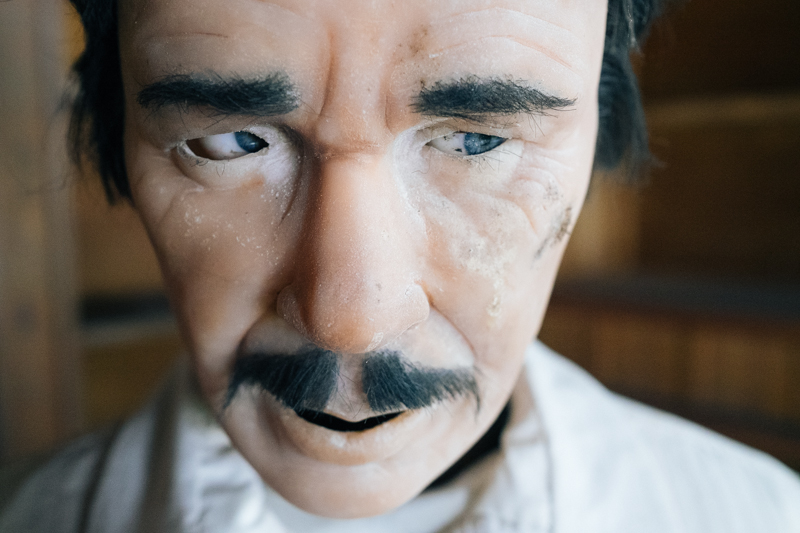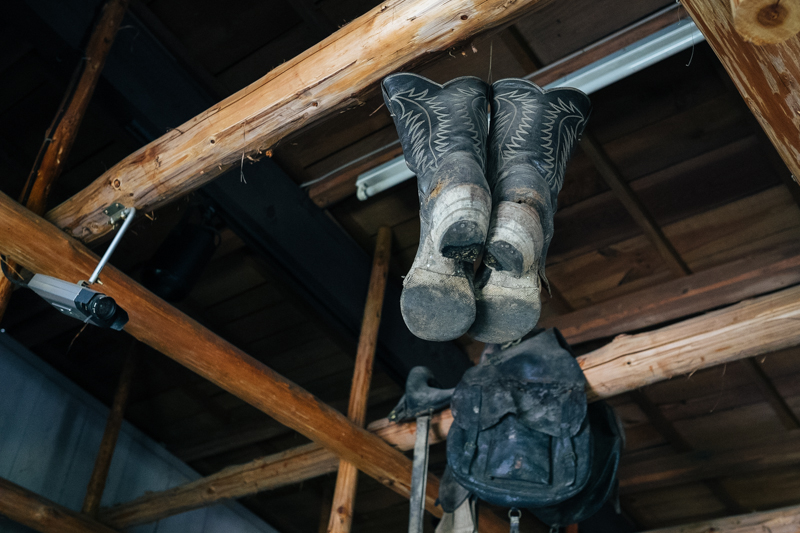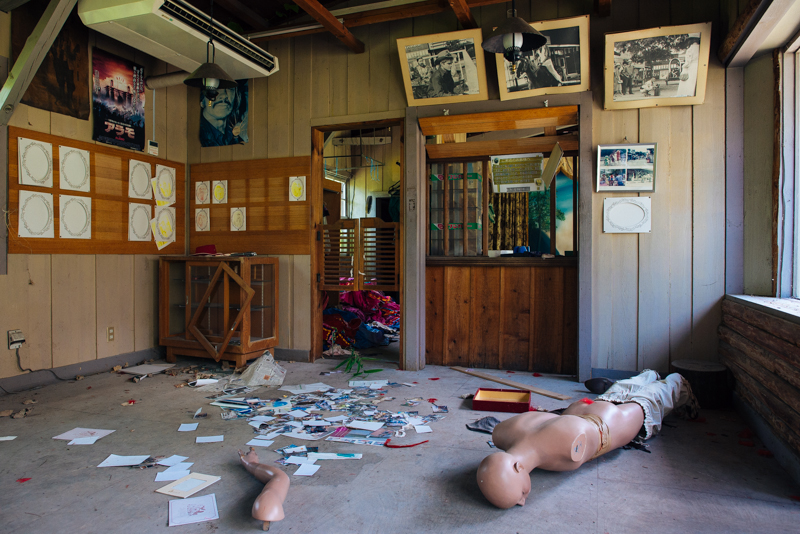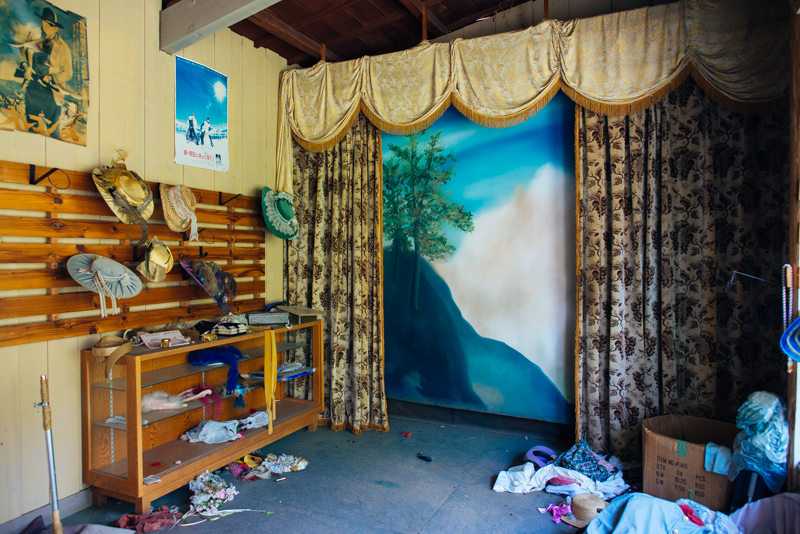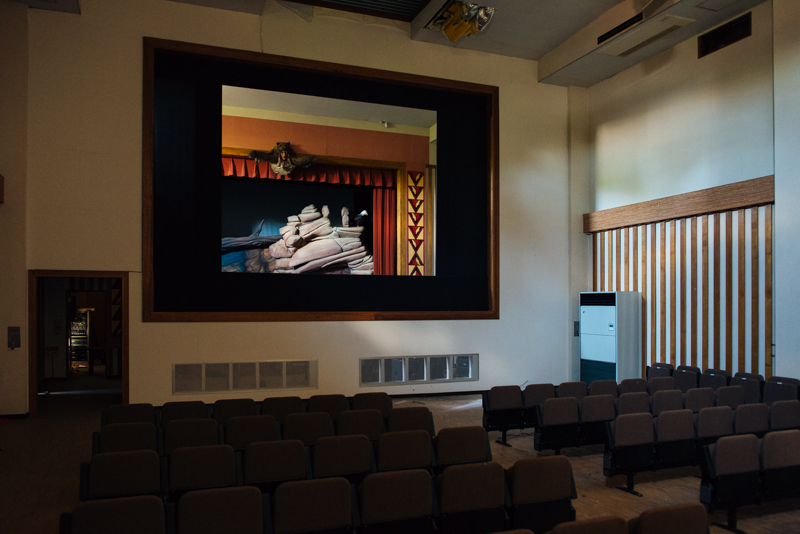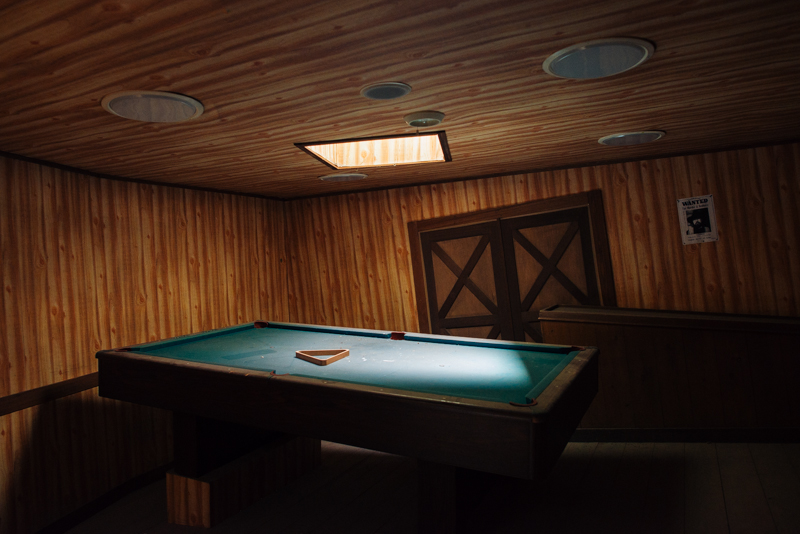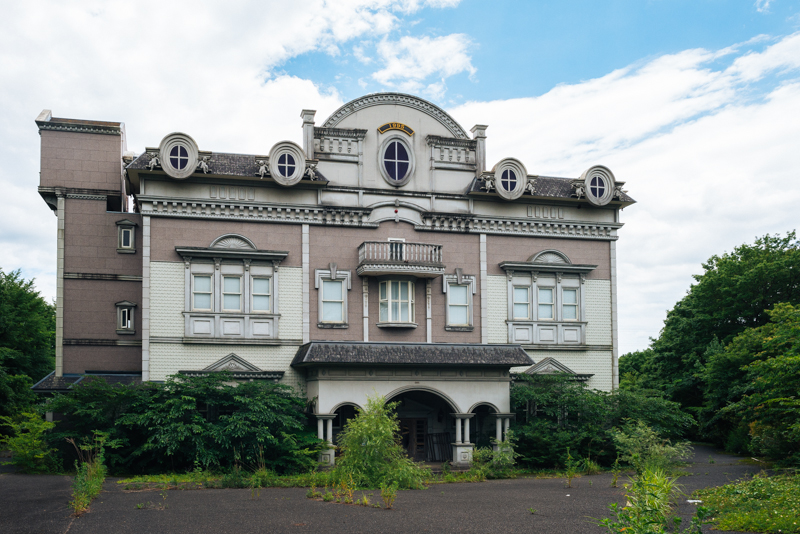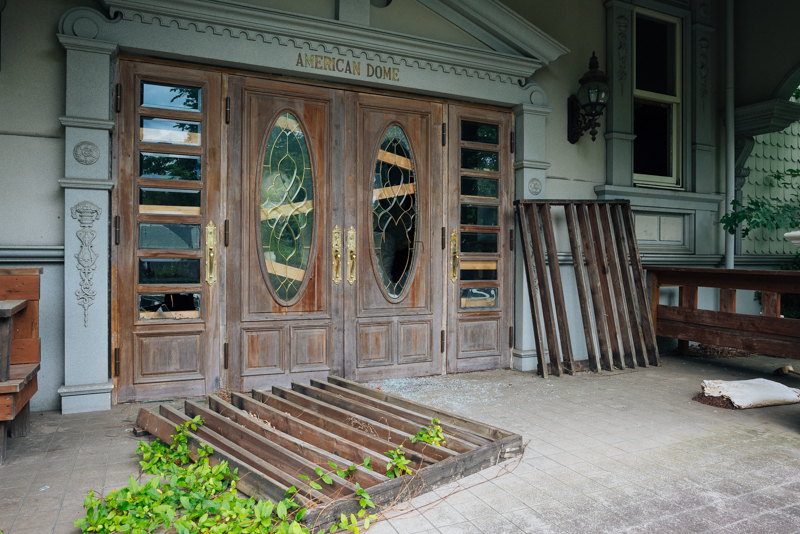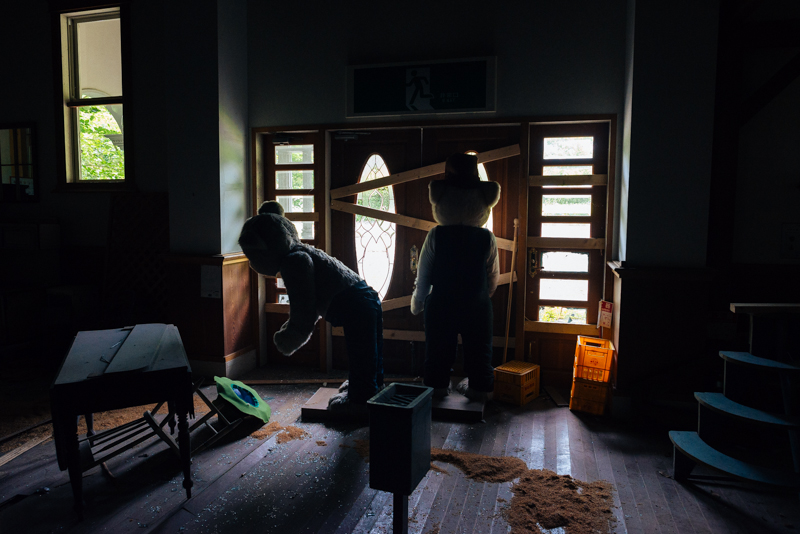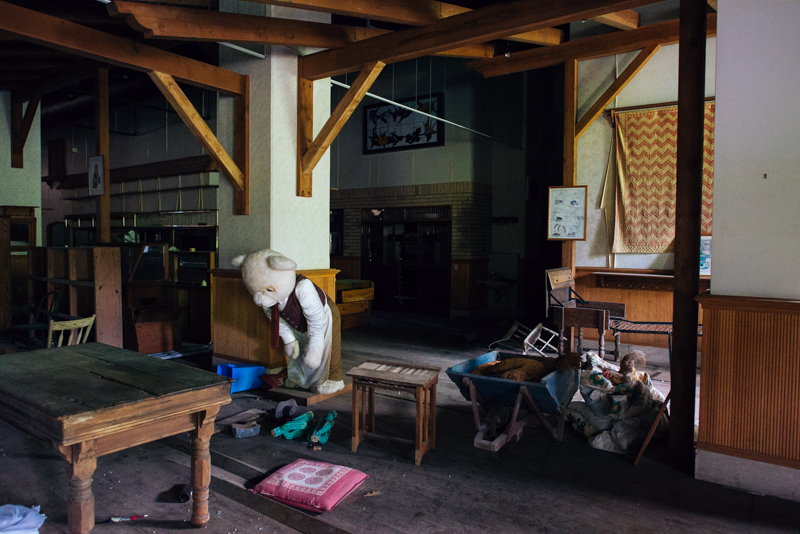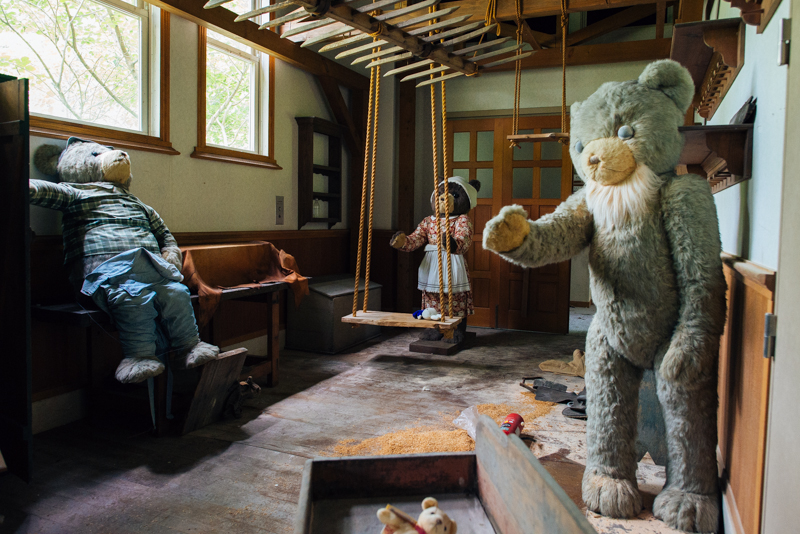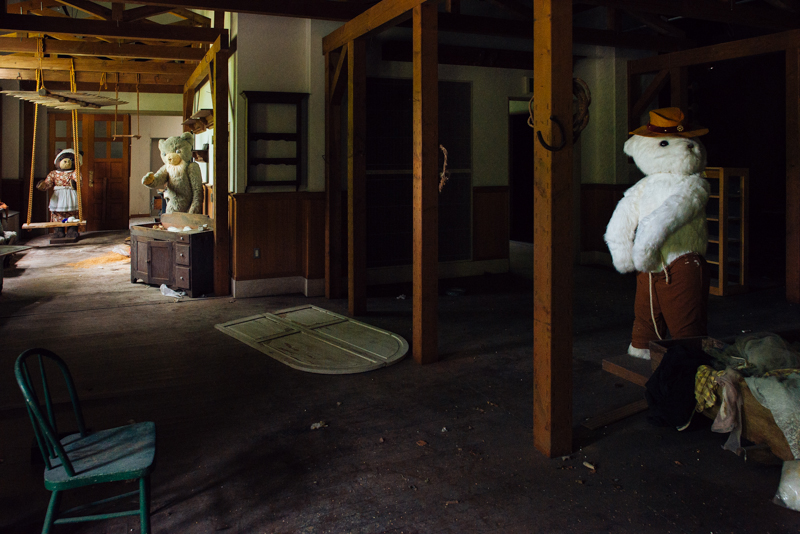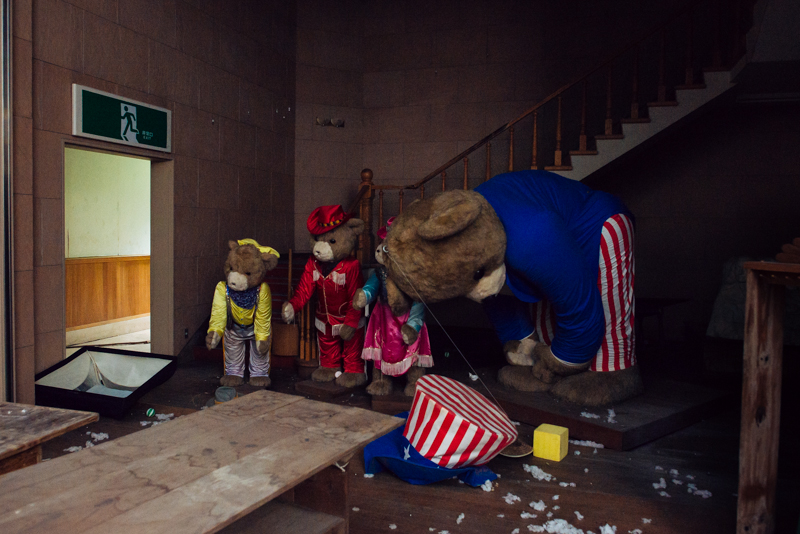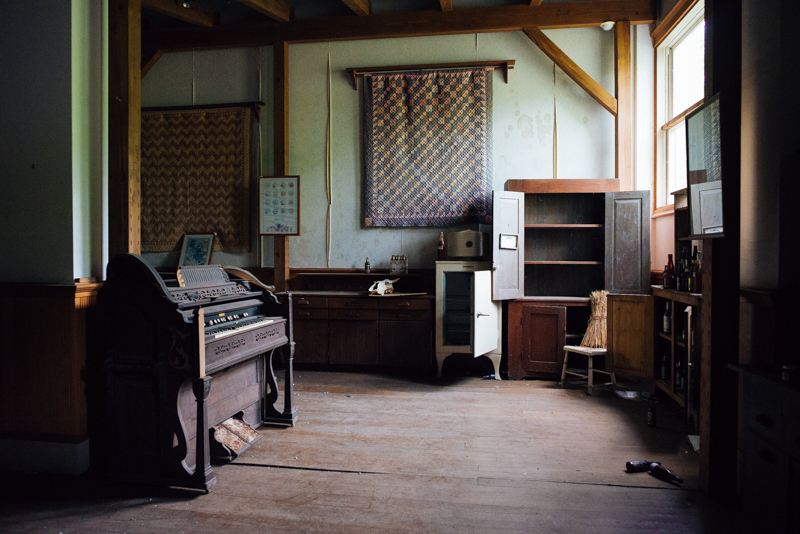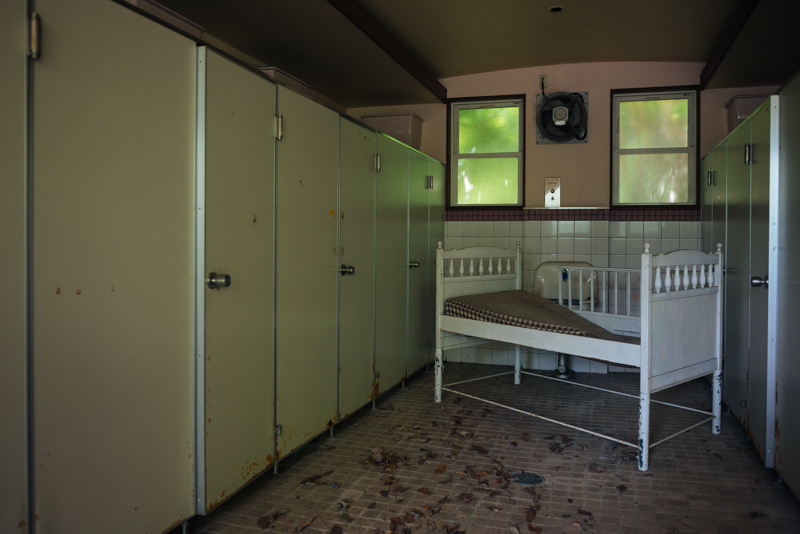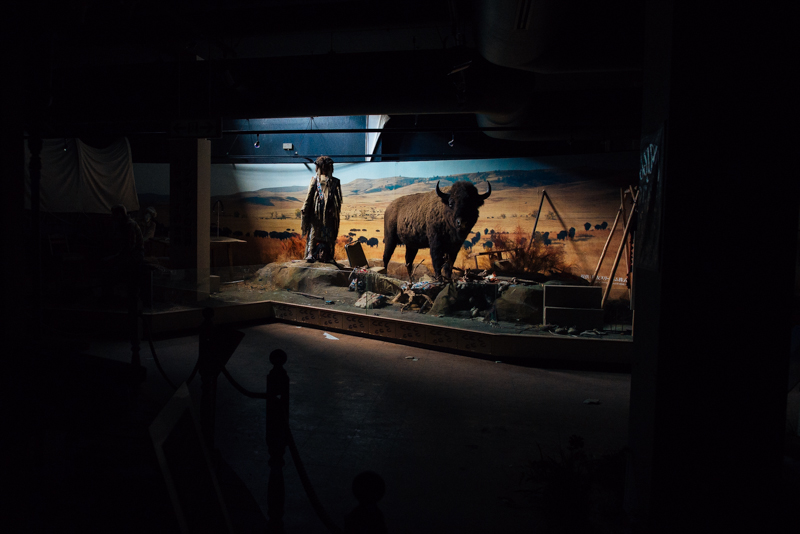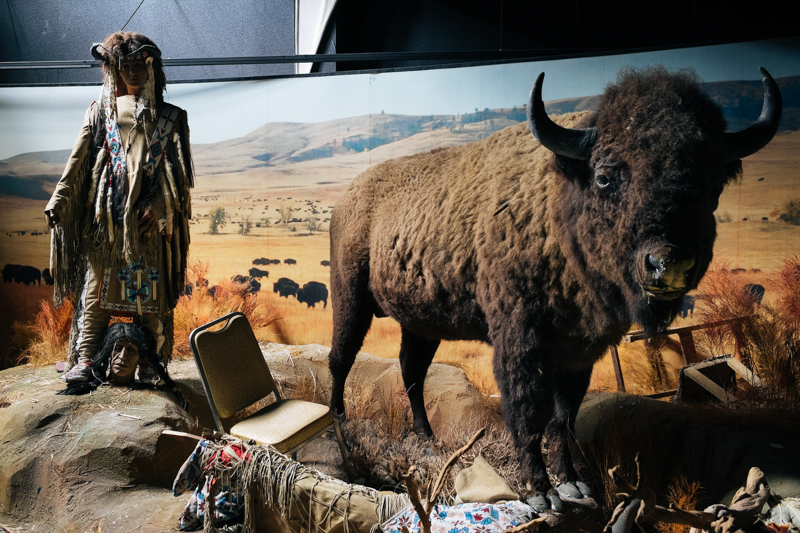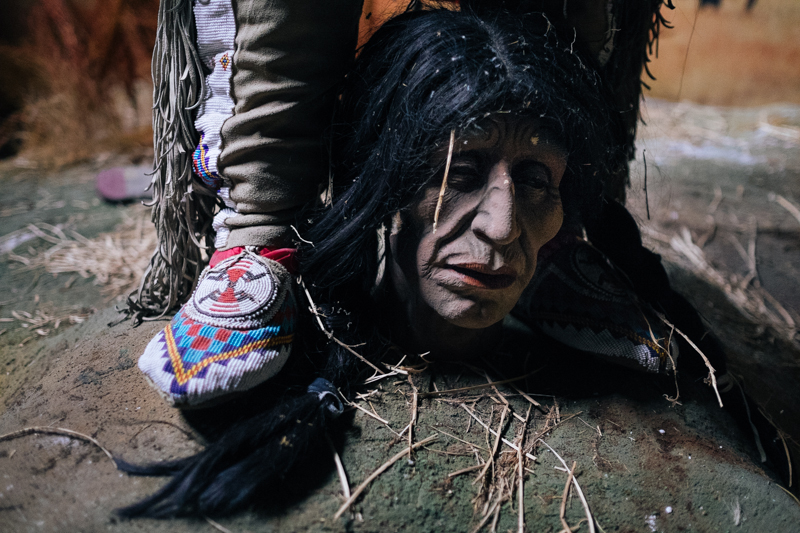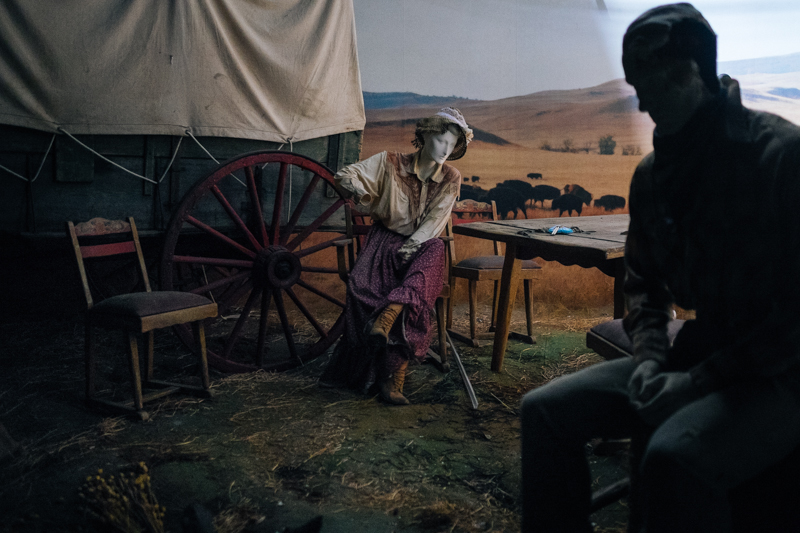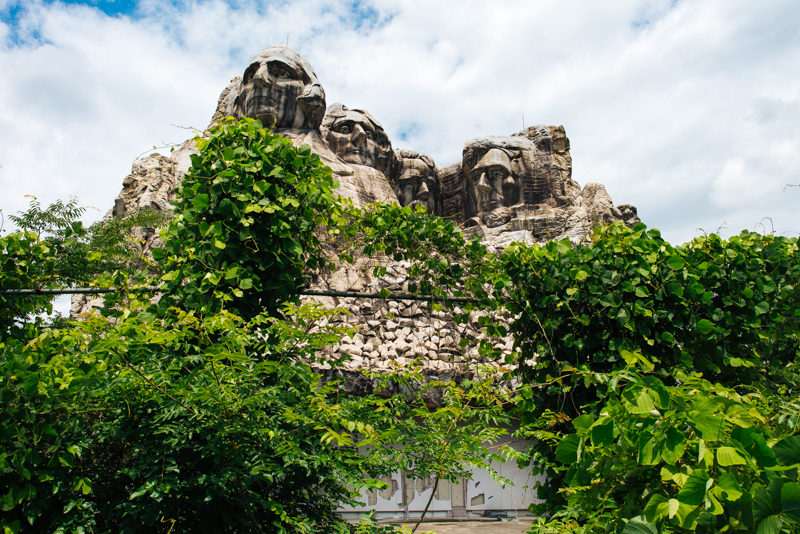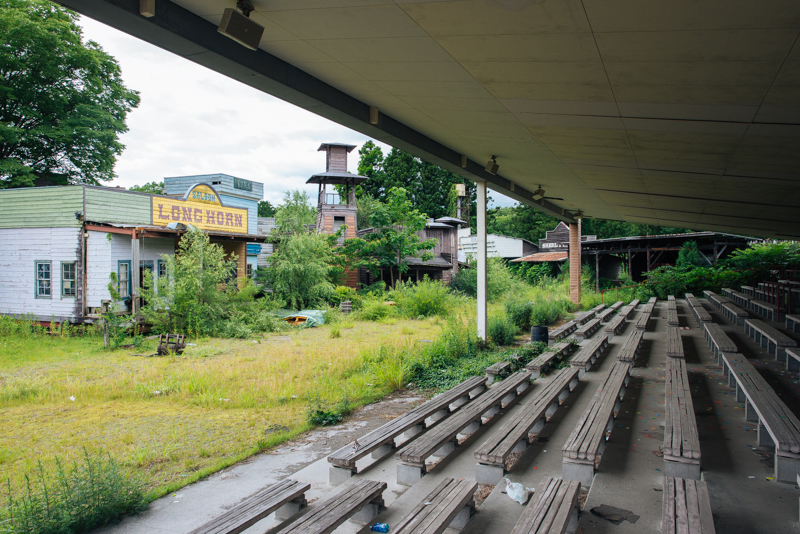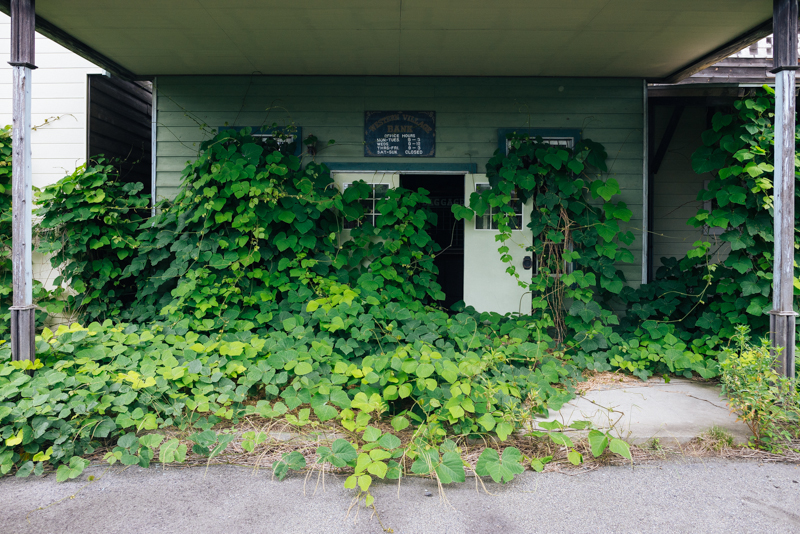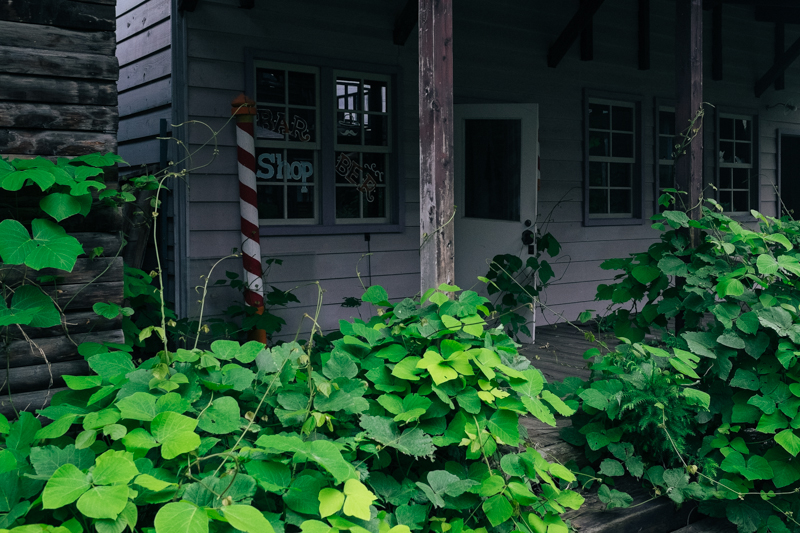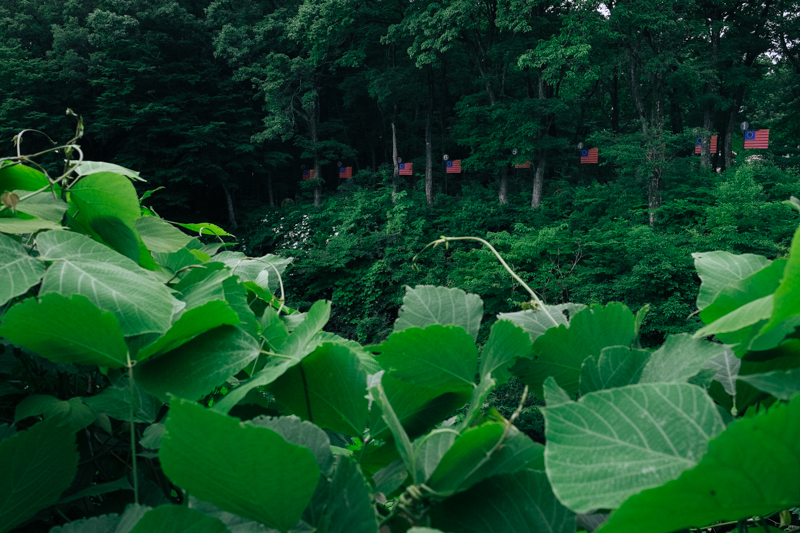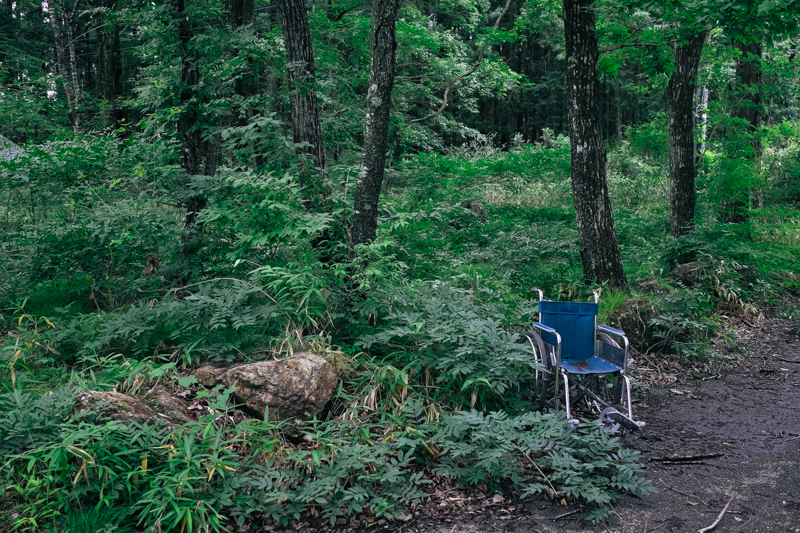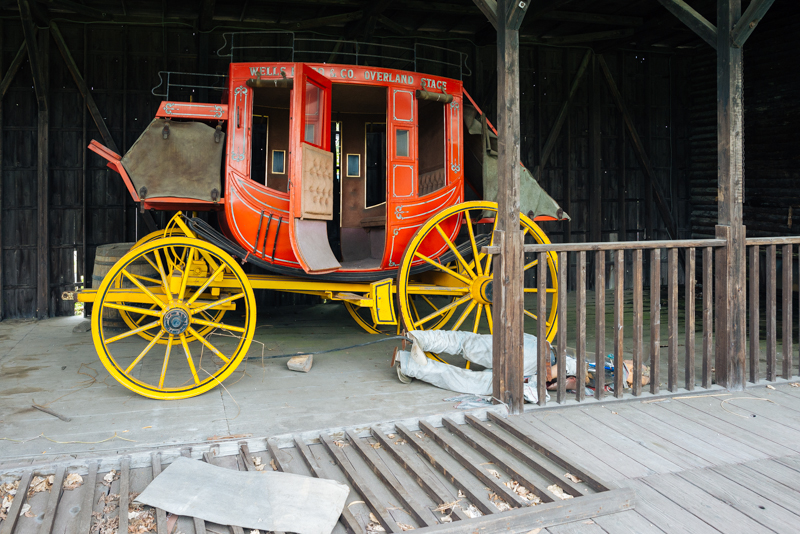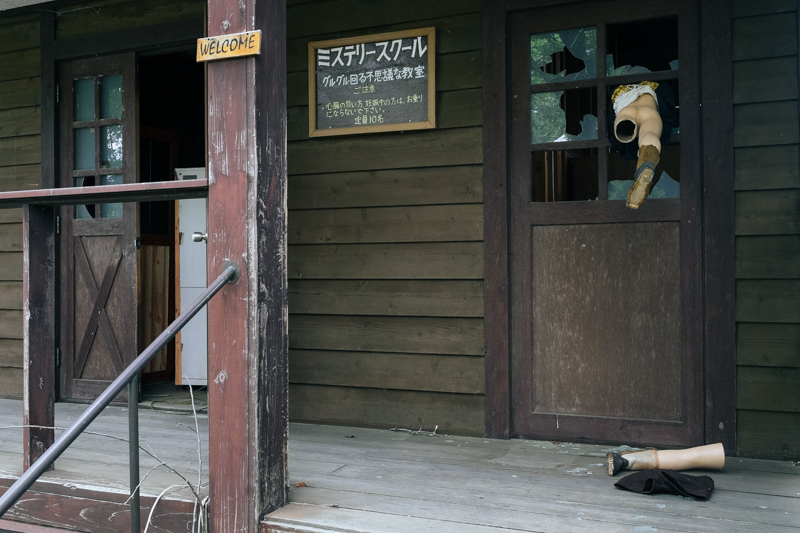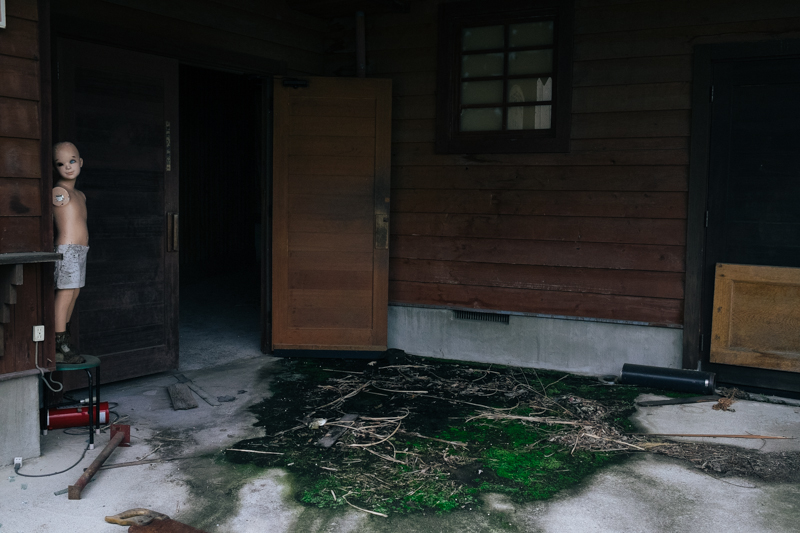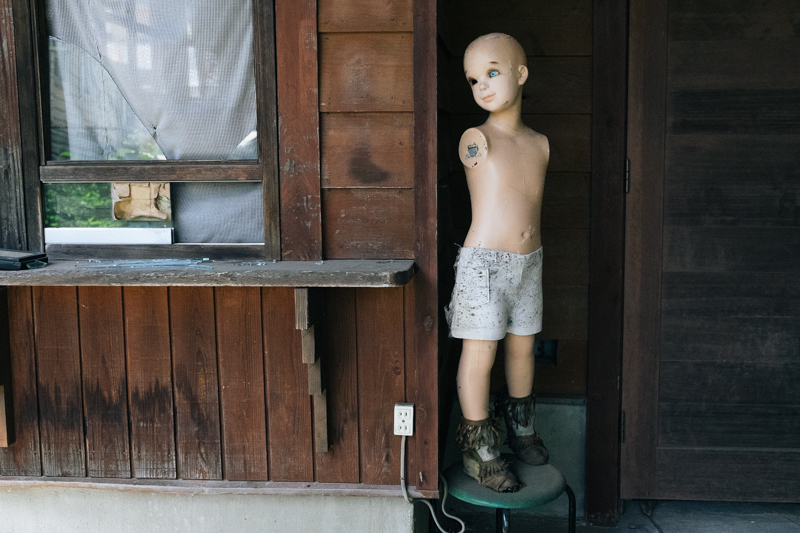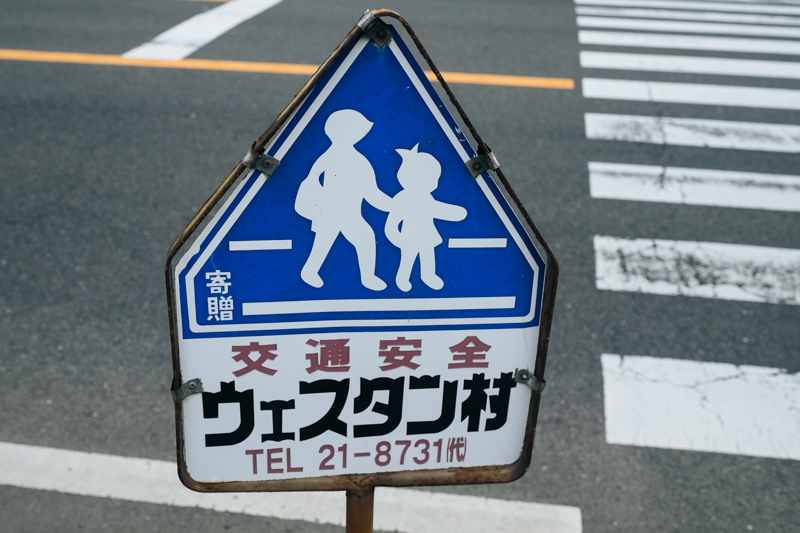Hot spring resort towns like Kinugawa Onsen bloomed in the post-war economic boom only to wilt when the real estate bubble crashed in the early 90s. Located a two-hour train ride north of Tokyo in Tochigi prefecture, its streets were once filled with families, companies on group vacations and young lovers. Now the only thing left to greet guests are abandoned lots decorated with hand-painted signs to protest the construction of a biomass power plant.
Where local business has failed tourist trap kitsch has survived--Tobu World Square with its miniature replicas of UNESCO heritage sites, Pyramid Hotel and its golden Buddha statue, the Shinto sex museum--and even abandoned attractions like Western Village still stand.
Originally a family-run ranch, Western Village opened in 1974 as a wild west theme park complete with cowboy gunfights, horse rides and a true-blue saddle tank locomotive imported from California. The proprietor, Ominami Kenichi, had more heart than business sense. In 1995 he made a losing investment of $27 million into a picture-perfect copy of Mount Rushmore. Ticket sales fell with the GDP and when the park closed for maintenance on December 7, 2006, it never reopened. Like the Native Americans he idolized, Ominami fell victim to the American Dream.
Its animatronic citizens remain, silicone mannequins that, despite the passing decades, look as youthful as the stars they replicate did during their Hollywood heyday. They make Western Village feel more populated than the town outside its molded timber gates.
A river cuts the park in half with a hacienda villa on the far side. Past the burnt adobe walls lies an open field, its putt putt golf and Segway courses razed by developers to make room for the maligned biomass generator. It’s only a matter of time before the bulldozers descend upon the cowboys and cowgirls. Along with the residents of Kinugawa, all they can do is stare at progress as it rumbles forward.



